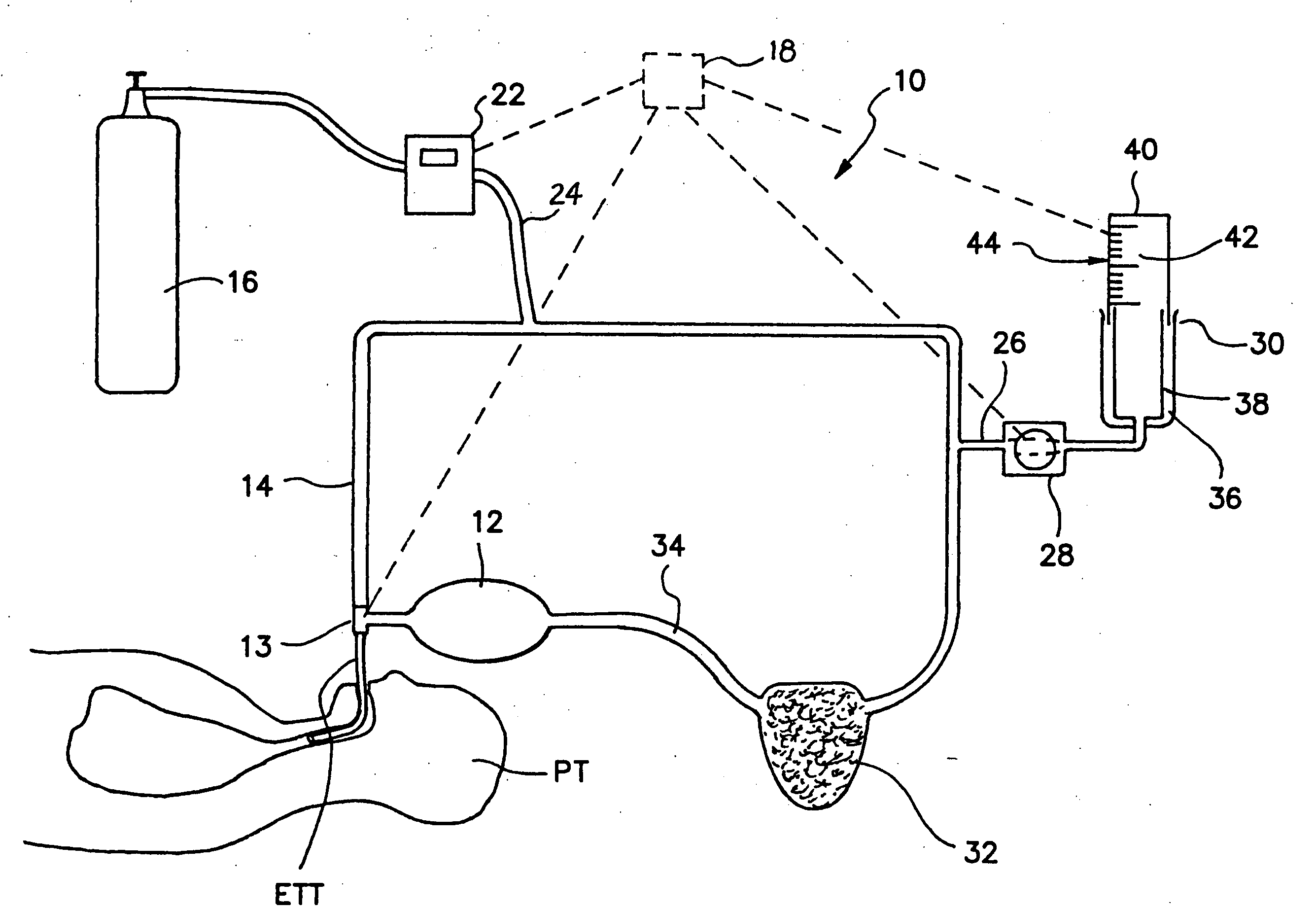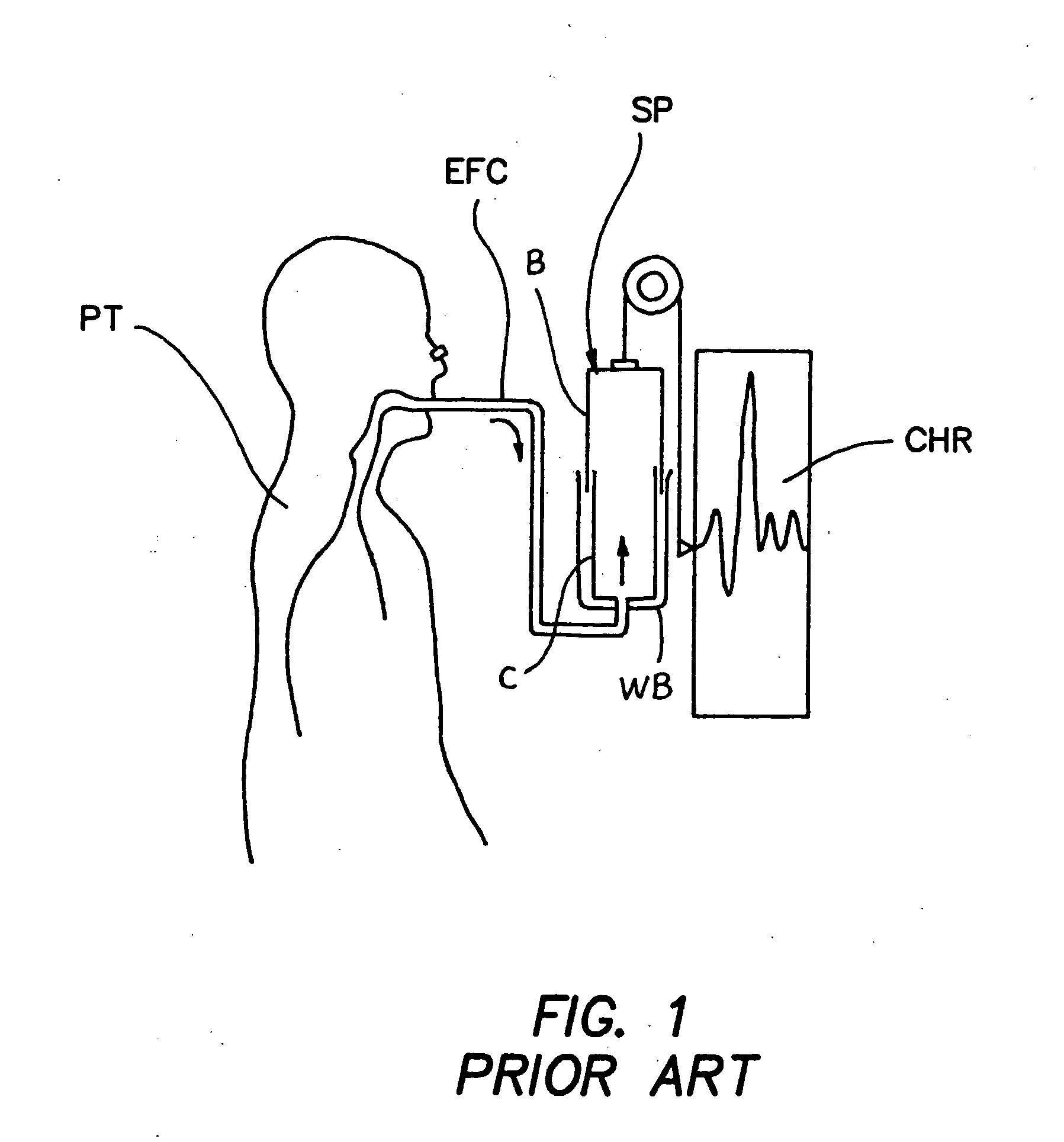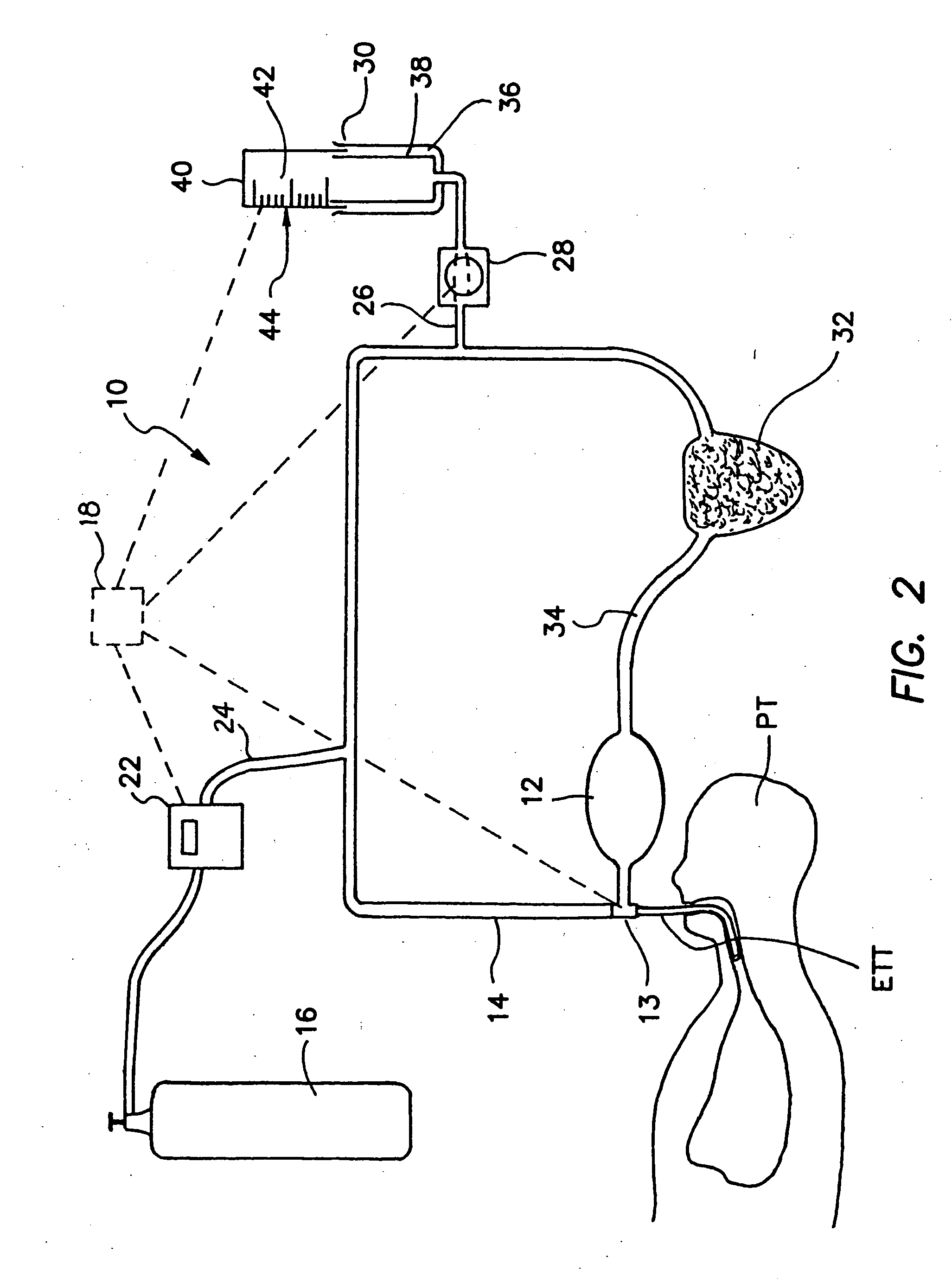Stand-alone circle circuit with co2 absorption and sensitive spirometry for measurement of pulmonary uptake
a spirometer and pulmonary uptake technology, applied in the field of biomedical devices and methods, can solve the problems of bell movement up and down in the water, affecting the accuracy of pulmonary uptake measurement, and requiring substantial care and maintenance, and achieves accurate and non-invasive pulmonary uptake measurement, prevent backflow into the spirometer, and prevent the effect of o2 uptak
- Summary
- Abstract
- Description
- Claims
- Application Information
AI Technical Summary
Benefits of technology
Problems solved by technology
Method used
Image
Examples
Embodiment Construction
[0015]FIG. 1 shows a typical water-seal, displacement spirometer of the prior art. As shown, the spirometer comprises a water bath WB having a cylinder that comprises a lower portion LP and a bell B positioned therein such that the bell B will float up and down in accordance with the volume of gas contained within the cylinder. The bottom rim of the bell B is submerged within water contained in the water bath WB such that the water forms a seal and prevents gas from escaping the cylinder. A chart recorder CHR records the up / down movement of the bell B. The patient PT breaths through conduit C causing the bell to move up each time the patient exhales and down each time the patient inhales. From the chart recording, one may determine lung volume measurements such as tidal volume ({dot over (V)}T), vital capacity (VC) and forced expiratory volume (FEV).
[0016]FIG. 2 shows a system for measurement of oxygen uptake ({dot over (V)}o2), in accordance with the present invention. As shown, t...
PUM
 Login to View More
Login to View More Abstract
Description
Claims
Application Information
 Login to View More
Login to View More - R&D
- Intellectual Property
- Life Sciences
- Materials
- Tech Scout
- Unparalleled Data Quality
- Higher Quality Content
- 60% Fewer Hallucinations
Browse by: Latest US Patents, China's latest patents, Technical Efficacy Thesaurus, Application Domain, Technology Topic, Popular Technical Reports.
© 2025 PatSnap. All rights reserved.Legal|Privacy policy|Modern Slavery Act Transparency Statement|Sitemap|About US| Contact US: help@patsnap.com



